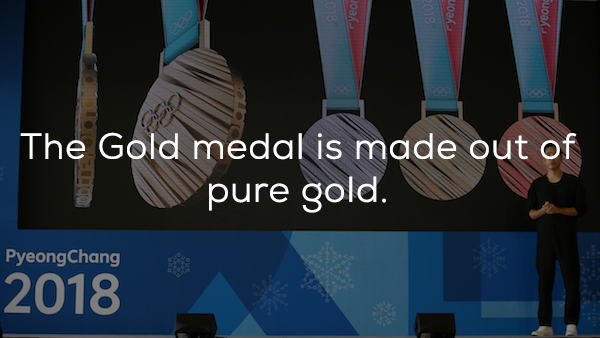
SPOILER ALERT: it’s not. The medals are just covered in gold, not made entirely of it. In the case of the big prize, only 6 grams of gold is all that’s needed. The inside is filled with 93 percent silver and 6 percent copper. This process has been in place since 1912, when it was deemed more cost effective to do it this way.

On paper, this seems like an honour and a chance to build some amazing infrastructure, get on tv and get global recognition. In reality, however, it sucks.
Hosting the Olympics cripples a city with severe debt, not to mention the crazy traffic and insane tax bill at the end of it. In most cases, the venues that were built to host, go to waste. Just look at Brazil in 2016. They struggled to get everything done on time, and now, their economy has fallen apart. This is why cities are opting out of bidding – it’s not worth it.

At the core, the Olympics should be about sportsmanship and purity of athletics, and we now assume that all athletes that participate are professionals (minus the mens hockey). In fact, until the mid-20th century, Olympians were not allowed to be professionals. It was required that they’d be amateurs who made no money for their amazing feats, so that there was no greed involved.
This changed in the television era, when it was realized that people wouldn’t tune in unless their favourite athletes were competing. Guess the NHL didn’t get that memo this year.
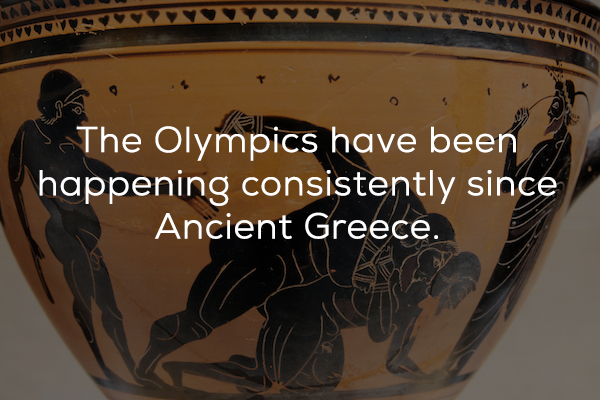
While everyone assumes that the games have been going on since ancient times, it’s not true. The last games the Greeks threw was in 393AD, then they stopped. As time went on, there was a feeling of nostalgia and there were a set of “Olimpick” games in 1612 that were held in England.
The modern day version of the games really started on August 6th, 1896 when the first modern day games were held in Athens, Greece. 14 nations participated in that first one.

If you got a time machine and went back to the early games, if you’re expecting nothing but sports, you’d be super surprised. The early games were more like a woodland orgy, than a sporting competition. Over 40,000 people gathered, with no proper accommodations or seating, but there were palm readers, fire eaters, artists, poets, prostitutes and ritualistic sacrifices. Oh, and everyone was naked and covered in olive oil.
Then somewhere in there, sports happened, but it wasn’t the main event, if you know what I mean.
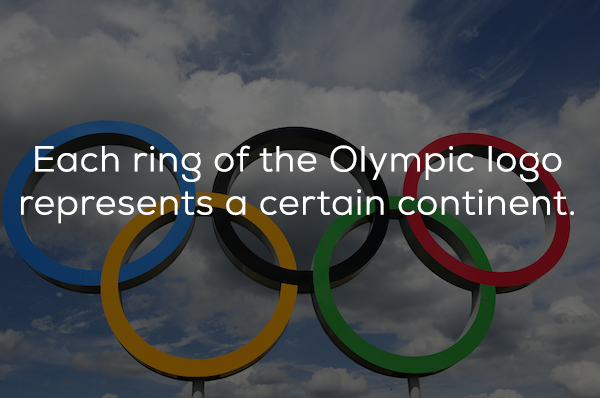
The rings are an iconic symbol, and as long as they’ve been around, so has this legend. Apparently, it’s believed that the red ring stands for North and South America, the black ring is Africa, the yellow ring is Asia, the blue ring is Europe and the green ring is Oceana. Yeah, I know, it’s a racist legend.
Instead, the colours in the rings logo, designed in 1900 by Pierre de Coubertin, stand for the most common colours in every national flag, while the 5 rings do stand in for the 5 continents.
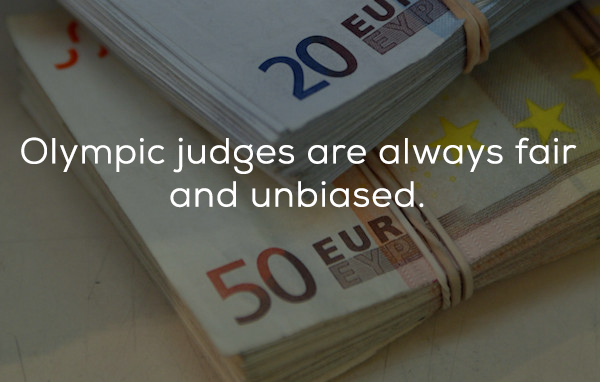
While Olympic judges should be fair and impartial, a lot of times, they’re not. The olympics have been subject to a lot of messy scandals, especially in the wake of the 2016 Olympics, where there was some sketchiness with the boxing. As well, leading up to these games, there was a lot of arbitrary judging when it came to figure skating judging.
But it gets weirder. In gymnastics, teams can give judges $300 to challenge a score (the first time. 2nd time is $500 and the third is $1G). If there was a problem, they’d get their money back. If the score stands, then the money goes to the national teams gymnastics federation. This is to ensure there’s no frivolous claims.
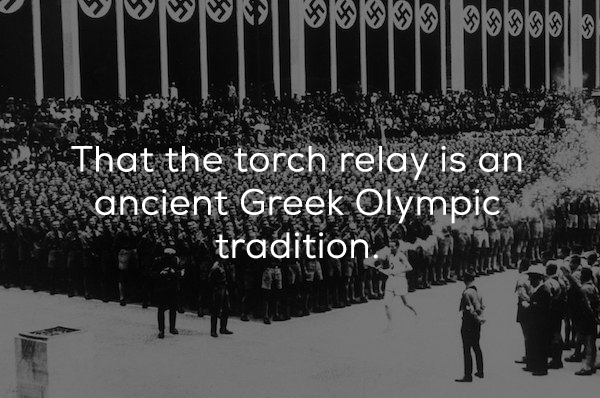
This isn’t really talked about a lot, and there’s a good reason. The ancient Greeks have nothing to do with the torch relay; it was all Hitler’s idea. Germany hosted the Olympics in 1936, and the relay was part of a big propaganda tool to promote the Nazi Germany.
It’s a good thing that Jesse Owens took the spotlight of those games by winning 4 gold medals and showing the Germans who it was done.
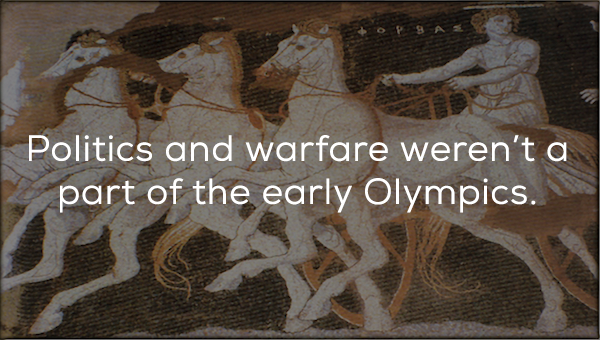
The Olympics weren’t always about peace. With thousands of competitors from various states that had once fought one another in ancient Greece, there was a lot of bad blood that led to more wars. In fact, in 364 B.C. during a wrestling match, a war broke out and spectators started cheering on and wagering on the 5,000 troops fighting.
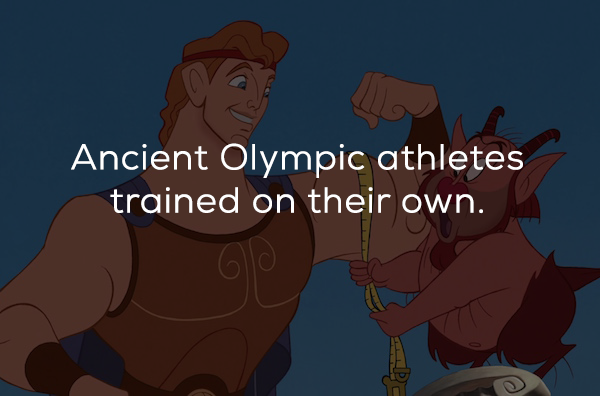
As with today’s athletes, ancient ones trained all year round, with a support system. There were sporting facilities where they paid to train, had trainers, doctors, nutritionists and physiotherapists. Trainers of ancient Olympians actually became famous themselves and would write training manuals and diet literature.
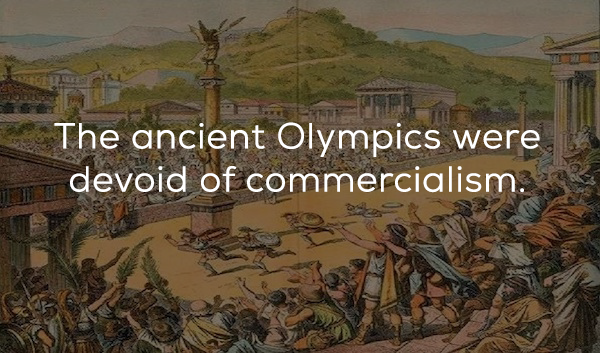
If you thought today’s games were bad, the ancient games weren’t any better. You needed licenses to operate food and drink concessions as well as sell souvenirs at the games. Also, winners didn’t get cereal boxes and cushy commentator jobs, but had statues, coins and vases commissioned in their honour and were used as endorsements.
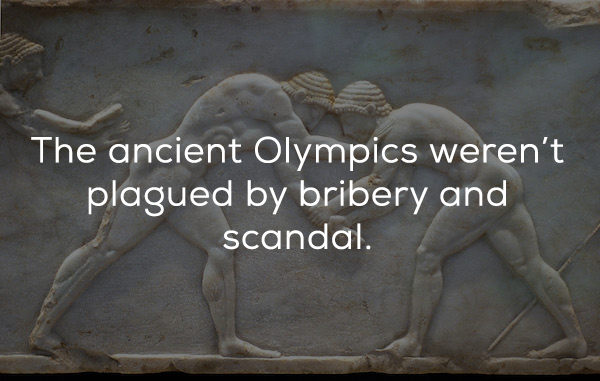
No matter what century you’re in, the desire to win is universal. While ancient Olympians swore an oath to Zeus that they’d play fair, not a lot did. Politicians bribed athletes to throw matches, and even the Roman Emperor Nero got in on the action in 67 AD. He entered a 4 horse chariot race with 10 horses, fell out of his chariot and didn’t finish the race, but bribed the judges to give him the top prize. In fact, he’s the most awarded Olympian in history with 1,808 prizes.
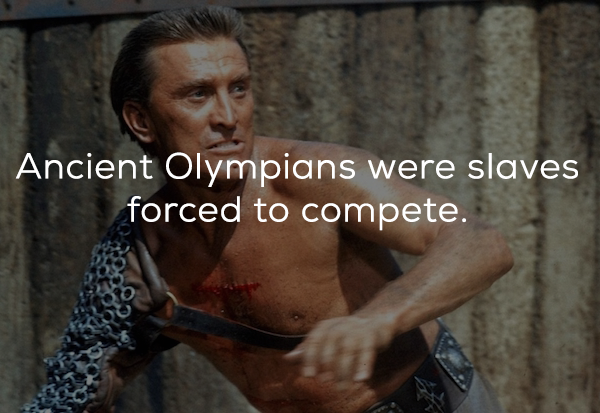
When people think of the ancient games, they imagine that it was all slaves being forced to play. What you’re thinking of are the Gladiatorial games in Rome. In fact, slaves were forbidden to compete in the games.
Most ancient Olympians came from noble and privileged backgrounds, because it cost money to train and compete.
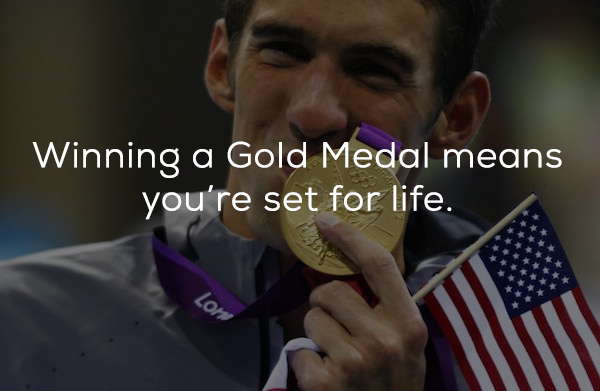
When you see an athlete cry over winning the gold medal, it’s not because their troubles are over and they can live the easy life. In fact, they’re crying over how much they owe Uncle Sam.
Why? When you win a gold medal, you also make $37,500 for your win. While that sounds fantastic, here’s what they don’t tell you: you owe taxes on that, and on the value of the medals themselves. With the value of the medal at $600 and the tax rate at 37%, you do the math.
As well, unlike some other countries, the US doesn’t provide funding for athletes, so they all need jobs, endorsements, etc.. just to survive while they train. Then after their career is over, they need to find jobs like the rest of us.
 Barnorama All Fun In The Barn
Barnorama All Fun In The Barn